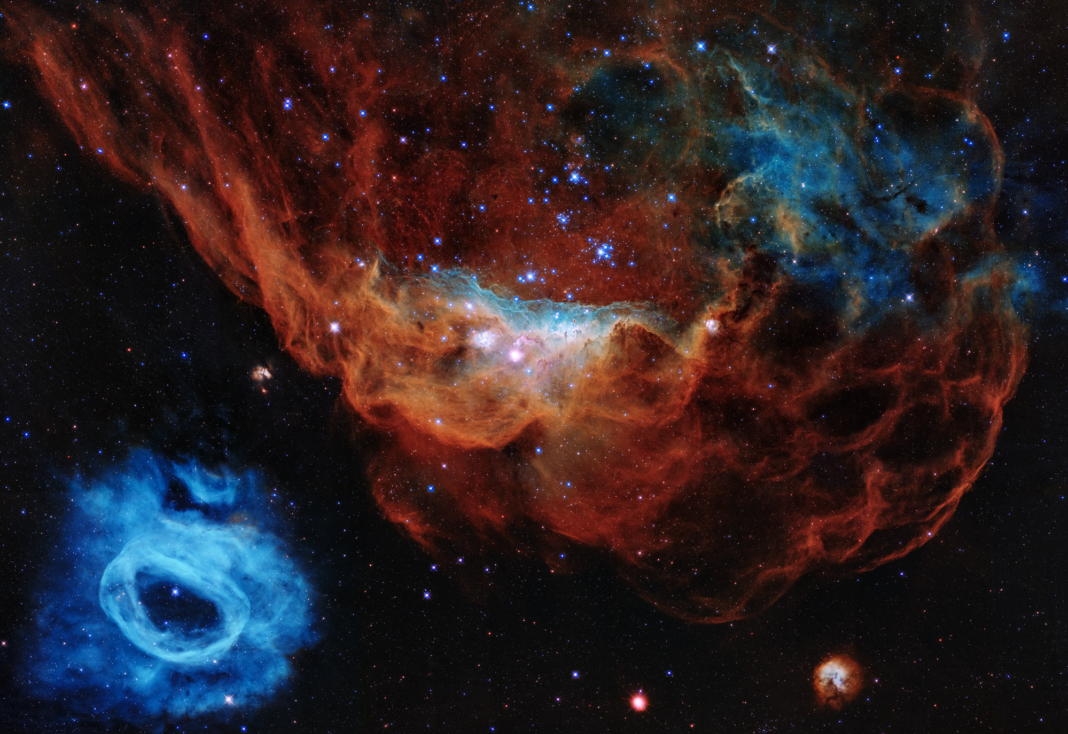Signatures of life in Venus’ atmosphere?
Earlier this year, a research team has found evidence of a special chemical compound in Venus’ atmosphere that, as far as we know, is a product only of biological processes. Feeling the excitement yet?
The compound is called phosphine and, on Earth, this gas is produced only by specific species of anaerobic bacteria – such as some of your gut flora. By the way, this gas is actually toxic to life, and even for those bacteria, phosphine is a waste product.
However, this doesn’t automatically mean that Venus has life. We just don’t know yet of a natural way to produce this compound outside of life. And, apparently, Saturn also bears some tiny amount of phosphine.
Meanwhile, one more recent article, published in the pre-print server arXiv, contests the finding of phosphine on Venus. Researchers re-examined the data from ALMA Radio Telescope and found no statistically significant amount of phosphine.
Or…, we are just looking at byproducts of microbes from Earth that we sent there during the Magellan and other missions.
Martian asteroid ALH84001
A cautionary tale…
Back in the 90s, the ALH84001 meteorite, retrieved from Antarctica, caused a stir as it appeared to show evidence of microbial life ultimately coming from Mars.
Fast-forward over a decade, and researchers were able to replicate the worm-like growths inorganically in the lab. Thus is our cautionary tale about extraterrestrial life: If it looks like a duck, sounds like a duck, and moves like a duck, well it still isn’t necessarily a duck.
It could be a very sophisticated and realistic animatronic.
The “WOW!” signal
This infamous radio signal was only detected once and is no clear match to anything natural we were aware of at this time.
The signal was received by the “Big Ear” radio telescope and noticed by Jerry Ehman who worked for SETI (the “Search for ExtraTerrestrial Intelligence”) at the time as a junior researcher. The radio waves picked up by Big Ear are transcribed using numbers and then letters to imply intensity; the signal was transcribed as “6EQUJ5,” where, for example, “E” would be the equivalent of a “14” in intensity or 8 levels of intensity higher than the “6” that immediately precedes it. Thus, the Wow string does not imply a message!
The Big Ear picked the string up in a non-descript little area within Sagittarius, and that, combined with the sheer uniqueness of it, means we still don’t have a non-life alternate explanation for it yet. Or, maybe it was a brief blip from ET after all.
The curious case of Tabby’s Star
Among other achievements and findings by the Kepler Space Telescope is the odd variations in star brightness observed with Tabby’s Star, a white star located in Cygnus around 1,400 light-years from Earth.
As with the Wow signal, this one is just as difficult to explain satisfactorily. One hypothesis was that up to 22% of irregular dips in brightness are the result of an uneven gas or dust cloud around the star. Another was that the star suffers from variations in how easily the photons it produces can leave its surface. Yet other hypotheses include a cluster of masses such as from a broken planet, a swarm of highly-elliptical comets, and even a Dyson sphere-in-the-making.
Further data analyses from 2017 suggest we’re likely looking at something to do with dust, but even so, nothing conclusive has been reached to date.



